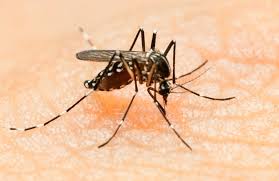 This morning, I was in my car driving down the interstate when National Public Radio (NPR) ran a story about UNICEF’s goal to raise $9 million to fight against the Zika virus. If you want to learn more about this new, you can click here and read more about it in the Washington Post. However, this isn’t really what today’s blog post is about . . . this morning I want to share with you my response to this story and how it applies to your non-profit organization.
This morning, I was in my car driving down the interstate when National Public Radio (NPR) ran a story about UNICEF’s goal to raise $9 million to fight against the Zika virus. If you want to learn more about this new, you can click here and read more about it in the Washington Post. However, this isn’t really what today’s blog post is about . . . this morning I want to share with you my response to this story and how it applies to your non-profit organization.
In the three seconds after listening to this NPR story, here are the thoughts that raced through my mind:
- Ugh! Not another scary disease story (e.g. Swine flu, bird flu, SARS, Ebola, etc) to whip up public fear and motivate action on any number of fronts. Here we go again. 🙁
- Hmmmm, I wonder if little kids are still carrying UNICEF boxes collecting small change at Halloween? Is it possible for a simple “tin cup philanthropy” campaign to raise $9 million for this effort?
- Barf . . . I think some of the U.S. Presidential candidates who lost last night’s Iowa Caucus could probably fund this $9 million UNICEF goal many times over. (If you doubt me, then you may want to click here and make sure you’re near a toilet for the post-article queasiness)
You’re probably wondering what any of this has to do with you and your non-profit organization?
Simply . . .
Make sure that your fundraising goal matches the size of your case for support!
If you are trying to do something BIG and you need your donors to understand how BIG it is as well as rise to the BIG occasion, then your fundraising goal better also be BIG. If you don’t live by this rule, then it is likely that your campaign will:
- be seen as underwhelming
- lack traction and volunteer support
- attract fewer donors than anticipated
- result in smaller average size gifts
- run the risk of not meeting goal
I took a phone call the other day from a potential client wanting me to bid on a capital campaign. After asking a few questions, it was apparent they only wanted to set a six figure goal to do a little renovation. I encouraged them to go back to their boardroom, ask the following questions, and then we’ll talk again:
- What other needs do your clients face in your community? How much money do you need to address those needs?
- Are your physical plant issues perfect if you are successful with these small renovations? If not, then what more needs to occur and how much would that cost?
- Is your endowment satisfactorily large enough to inspire confidence in your donors that you have the question of long-term sustainability addressed?
- Look at this renovation campaign through the eyes of your donors. What do they see? What are their reactions?
- Does your organization possess the internal organizational capacity to sustain what you’re building? If not, can that be built into this campaign? If so, what would that cost? (e.g. endowing staff positions, etc)
Please use the comment box to share your thoughts and experiences with goal setting and building a B-HAG (e.g. big, hairy audacious goal) type of campaign and case for support. Have you been in this position before? If so, what did you do and what did you learn? We can all learn from each other.
Here’s to your health!
Erik Anderson
Founder & President, The Healthy Non-Profit LLC
www.thehealthynonprofit.com
erik@thehealthynonprofit.com
http://twitter.com/#!/eanderson847
http://www.facebook.com/eanderson847
http://www.linkedin.com/in/erikanderson847
